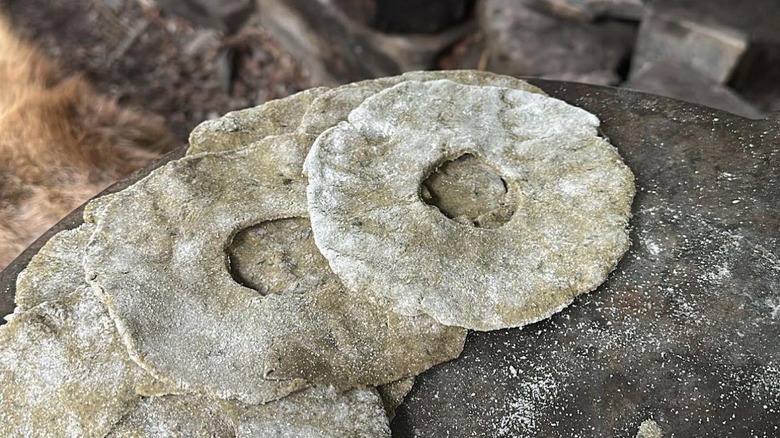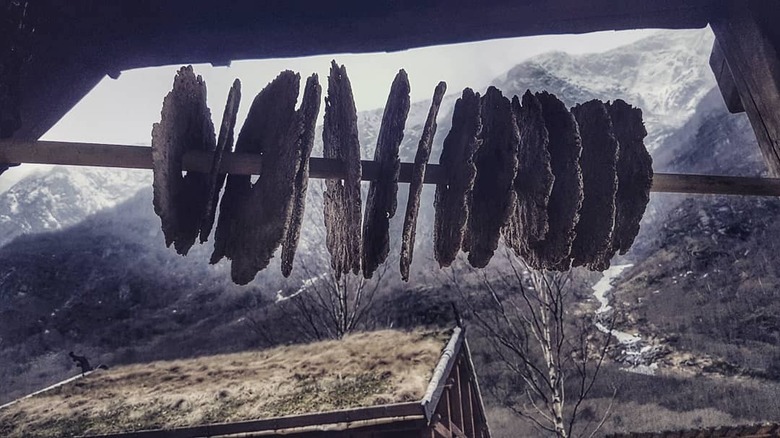How Vikings Stored Their Bread And Why It Worked
Commonly kneaded with reindeer blood and pierced in the center, Viking bread sounds a bit like a recipe that orcs in a Tolkien novel might have conjured up over the embers of a dying fire. To be fair, not all of the loaves and rounds Vikings baked got such sanguine infusions, and even the blood-based recipes relied on flours made from oats or barley, plus wheat flours like emmer and einkorn. However, Viking rye bread recipes seem to have been the most ubiquitous.
The combination of blood and flour created a meal that filled hungry stomachs during the harsh Scandinavian winters and traveled well thanks to the Vikings' unlikely baking and storage methods. Think crudely misshapen discs and doughnuts strung through the middle with a twig, piece of twine, or wooden dowel, and you're getting a pretty accurate picture of how these flatbreads must have looked hanging from a clothesline or pole in Scandinavian homes.
The way Vikings stored homemade bread offered a couple of benefits. First, it dried the bread out, making it possible to keep it for longer periods of time. This storage method (plus the bread's bloody contents) kept it so well that the pantry staple was thought to last through several stages of a person's life — until they were ready to be married. And second, vermin were so common that Vikings had cats to keep them away. This food-storage-on-a-stick method discouraged both pests and pets from making dinner out of the bread.
Higher purposes for Viking bread storage
Like the Ancient Egyptians who supplied their revered dead with sustenance for the afterlife, it appears that "holey" Viking bread may have served a similar purpose. Samples of Viking bread found at an archaeological site in Birka, Sweden, are thought to have been baked in the funeral pyres of ancient Vikings. For comparison, in Viking homes, simple flatbreads pierced through the center with wooden dowels hung over the stove to dry the bread out. At Viking funeral sites, instead of hanging on dowels, pieces of Viking blood bread hung on bronze or iron wires, adorning urns. It's likely that the wires allowed ancient Viking funeral attendants to pull the discs of bread out of the fires once the cremation process ceased.
More than 1,000 burial sites were examined on the island of Björkö, where the Birka site is located, according to a study by Ann-Marie Hansson that was published in Volume 9 of Stockholm University's Laborativ Arkeologi. Of those, 575 showed signs of cremation. Although historical records suggest that flatbreads were common during that era, meaning that everyday folk ate them, at least 42% of the cremation burial sites contained funeral gifts. That site excavators found some burial sites with bread samples near or even inside the funeral urns suggests someone of importance was likely buried in those graves. Between these funerary customs and the way they carefully stored it at home, Vikings clearly held bread in high regard.

